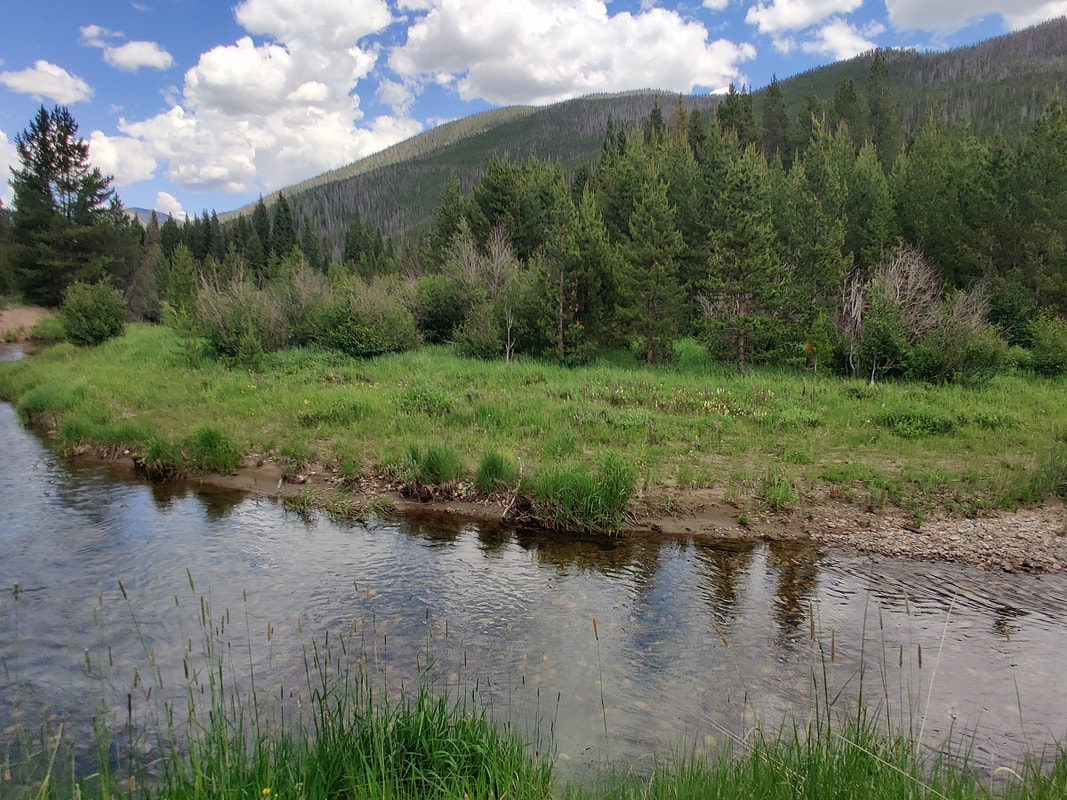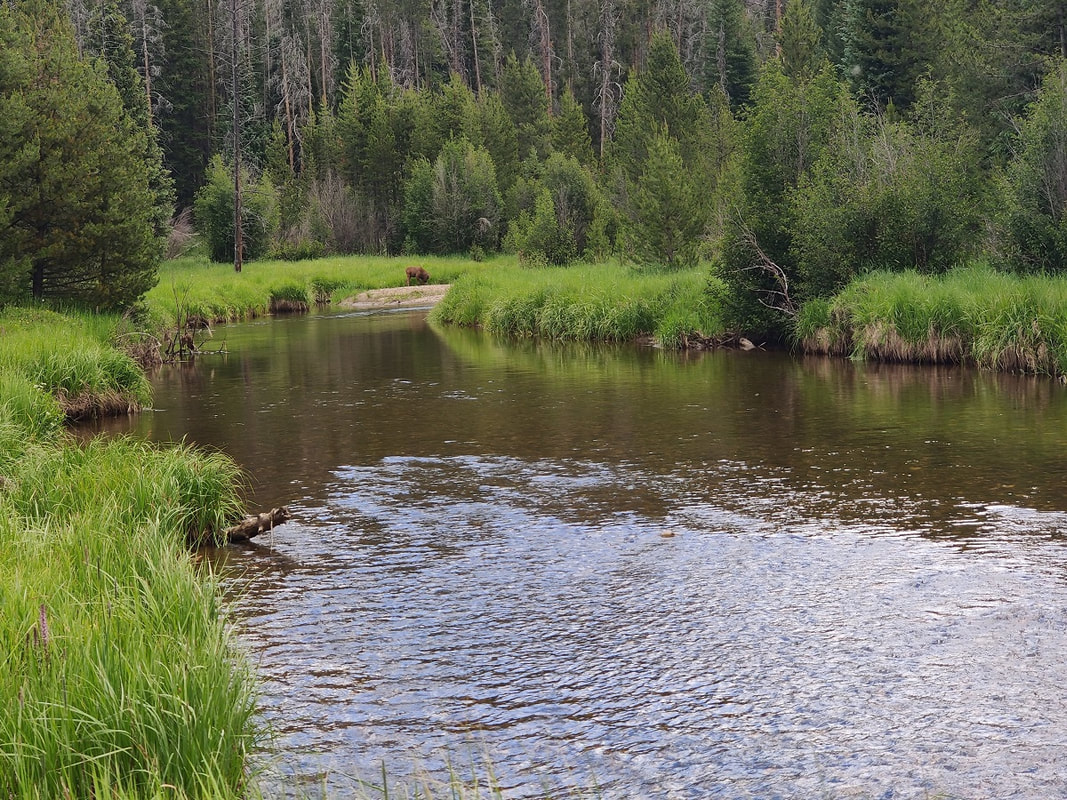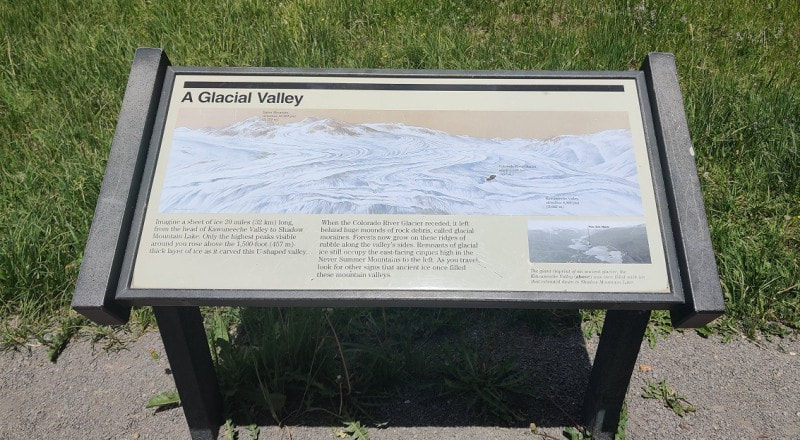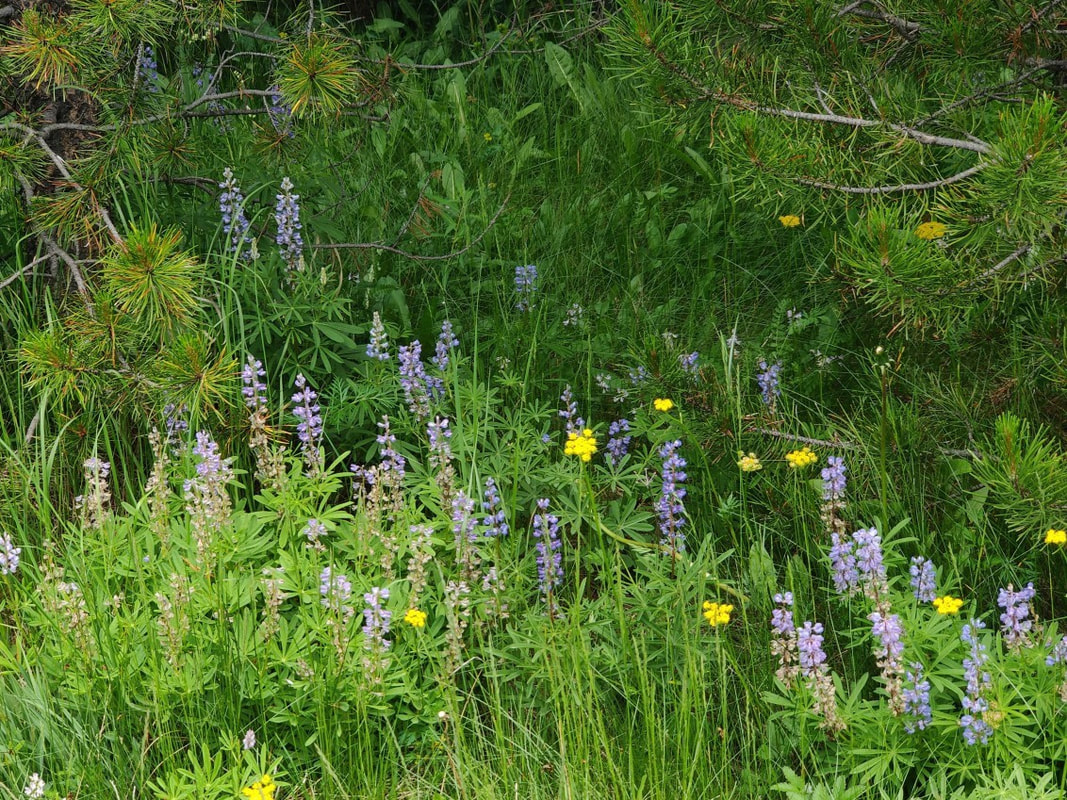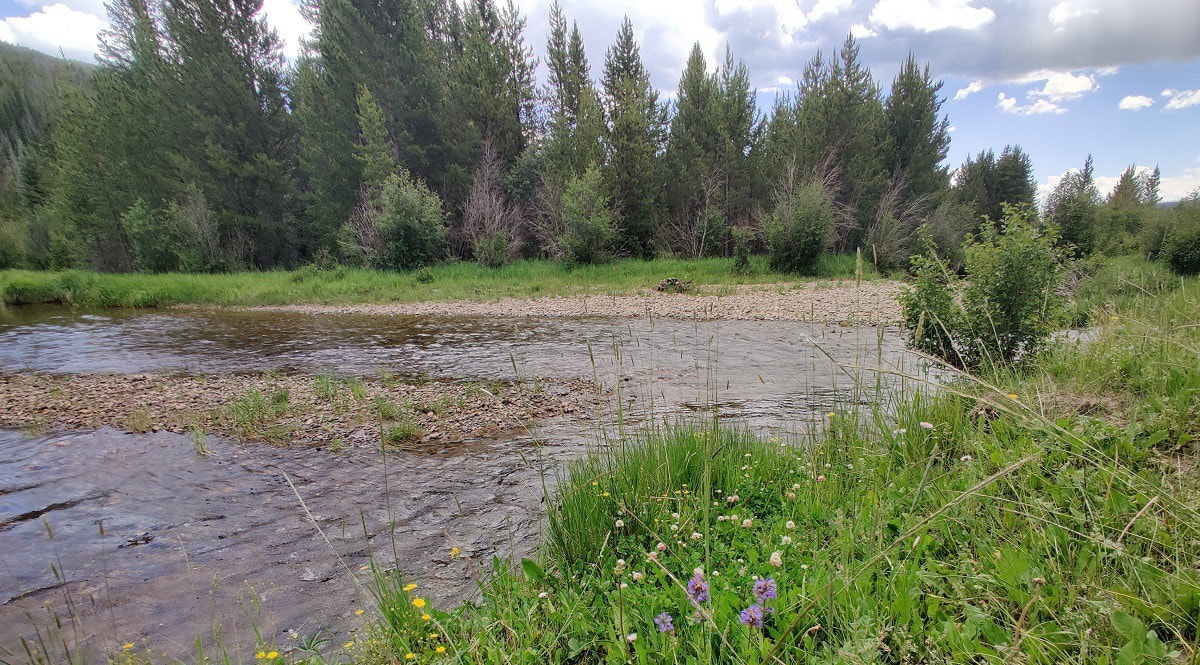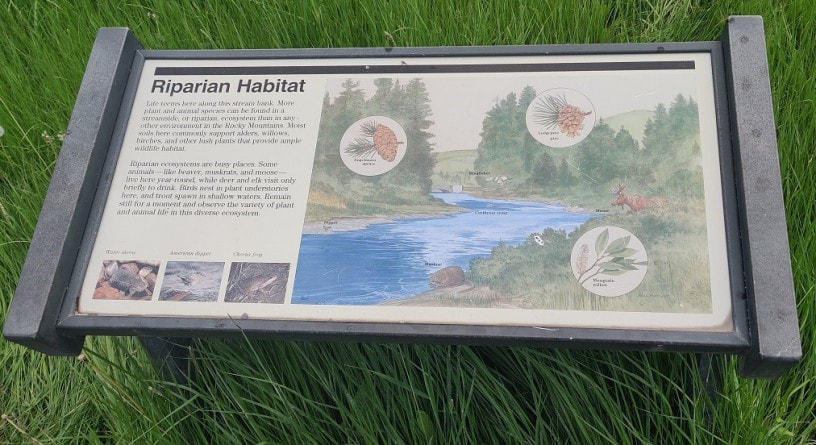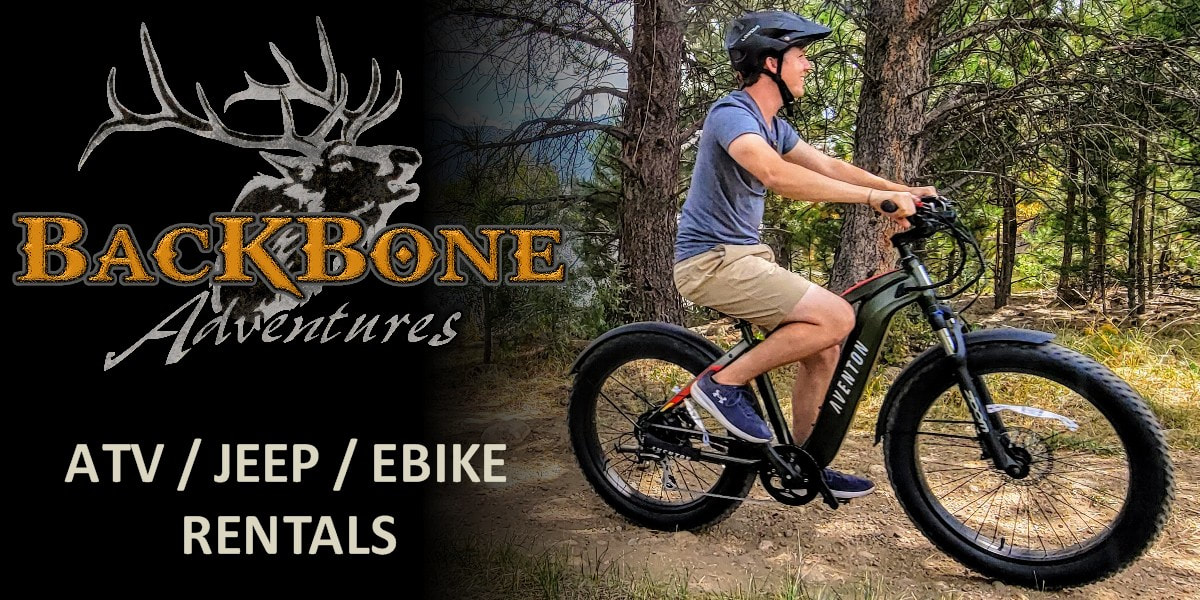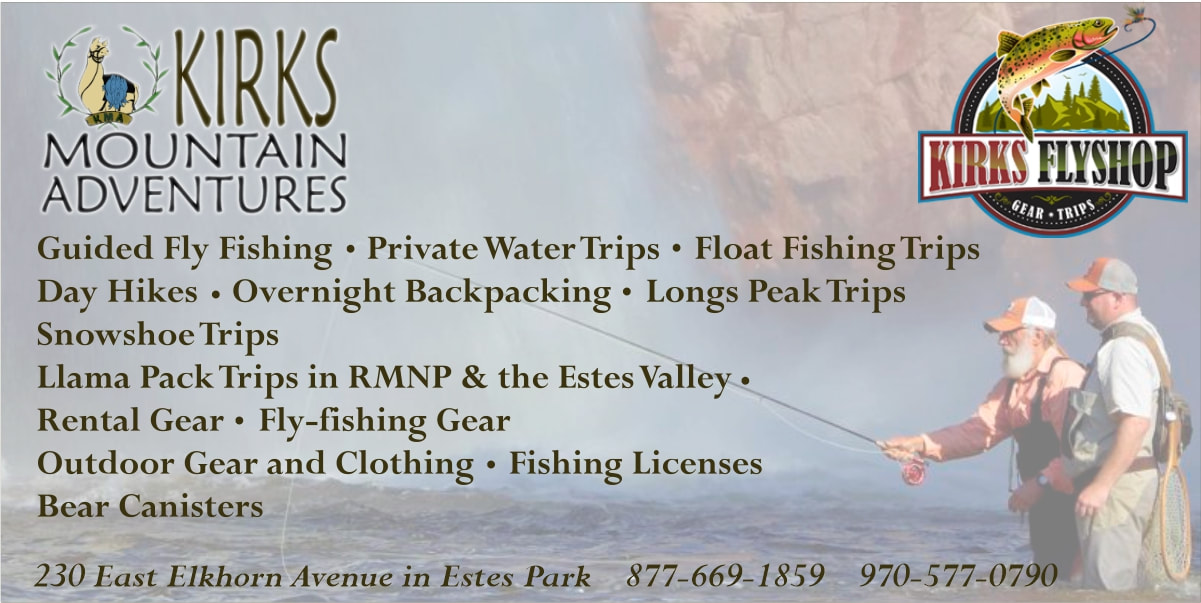|
Deep history and geology in the Kawuneeche Valley Story, video, and photos by Barb Boyer Buck Video edited by Quinton Rusk The Coyote Valley Trail, located on the west side of Rocky Mountain National Park, is a half-mile stroll through the Kawuneeche Valley. Situated between the Front Range and the Never Summer Mountains, carved by glacial movements and the headwaters of the Colorado River, this mile-wide valley is beautiful and home to a plethora of wildlife. Two years ago, the East troublesome Fire burned into the southern part of this valley to create devastating damage extending into the town of Grand Lake. But where this trail begins, in the northern section of the valley, the land was spared. This is one of several handicapped-accessible, interpretive nature walks in Rocky that immerse the visitor in a comprehensive science and history lesson. It also offers many spots to rest, great access to the Colorado River for some catch-and-release flyfishing, and wonderful wildlife viewing. Signs along the way educate the visitor about the history and ecology along headwaters of the Colorado. 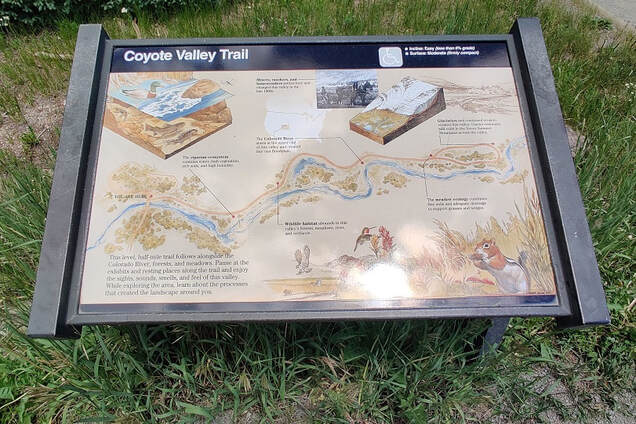 To truly understand this valley, we need to go back tens of millions of years ago. Through the violent creation of the mountains surrounding the Kawuneeche (Arapaho for “Coyote Creek”) Valley, there are outcroppings of rock that date back nearly two billion years – formed before the evolution of multi-cellular life. Rocky Mountain National Park now preserves some of the most expansive mountainous terrain in the country but this land once was covered in a vast sea, for the most part. The formation of the Front Range which is adjacent to the valley on the east side, started with what geologists call the “Laramide Orogeny or Revolution." “Near the end of the Cretaceous Period… poorly understood forces began to propel the range upward…” wrote historian Thomas G. Andrews in his book, Coyote Valley: Deep History in the High Rockies (2015). “By the time the earth ceased its squeezing and thrusting about 45 million years ago, the former low-lying heart of North America had risen some three miles above sea level.” Next came the formation of the Never Summer Mountains. Volcanic eruptions approximately 27 million years ago created these mountains that border the west side of Kawuneeche Valley and the southwest edge of Rocky Mountain National Park. These mountains were once up to 17,000 feet in elevation before erosion whittled them down. Nestled between these two ranges is the subject at hand: a low- lying area where the forces of water and ice carved out a nearly 20-mile long valley, running north-south. The first traces of human activity in this valley are from approximately 13,000 years ago, but its use diminished and by 11,000 years ago, when the ice age made another severe grip on the area, humans had moved on to warmer climates. Slowly, the weather improved and people returned to the valley to hunt and gather in the summer months. This magical valley, created by the forces of adjacent mountain-building events and continuous glacial reduction had been utilized and managed by these humans for ten thousand years before the arrival of any other people. North American native populations were displaced from their homelands beginning in the 16th century with the arrival of the Spanish, pushing indigenous nations further west over the next three centuries. But the northern part of the Rockies remained too remote for Spanish colonization, and the adaptive nature of the Nuche (ancestors of the Ute Nation) allowed them to thrive in their nomadic territories, especially after the arrival of the horse. Eventually, the displaced Arapaho nation utilized these hunting grounds, too, and fierce battles were held between the two nations in the Kawuneeche Valley. European colonists appeared with the fur traders, then those seeking silver and gold, and finally, settlers. By the late 1800s, the Nuche were displaced permanently and thus, their nomadic mountain tradition came to an abrupt end. Settlers arrived in the late 1800s to “try their hand at ranching,” but most of these homesteads were eventually turned into guest ranches. The Kawuneeche Valley was added to Rocky Mountain National Park in 1975. Now, let's turn our attention to the headwaters of the Colorado River which cuts through the Kawuneeche Valley and travels on to Mexico, 1,450 miles long. It passes through 11 National Parks and is the sixth longest river in the nation. This waterway created the Grand Canyon and is used for water supply in several drought- prone cities such as Las Vegas, Los Angeles, Phoenix, and Houston. Today, the river runs at critically low volumes in these watersheds. “Water stored in the Colorado River's biggest reservoirs has declined during the past two decades due to climate change and overuse. The river and its tributaries provide drinking water to 40 million people, and irrigate millions of acres of cropland. In addition to the seven U.S. states, the river also crosses into Mexico and provides water supplies to cities and farmers in two Mexican states as well.” (from “7 states and federal government lack direction on cutbacks from the Colorado River,” by Luke Runyon for NPR, published August 27, 2022). The article goes on to state this shortage has been linked to decades of poor water management along the reservoir routes and may lead to the eventual elimination of recreational and irrigation uses of the Colorado River. But along its headwaters, it is running clear and fast – even in late summer, due to the above-average precipitation experienced in Rocky Mountain National When you stroll along the Coyote Valley Trail, the riparian habitat is thriving and hosts a plethora of wildlife such as moose, beaver, and muskrat while numerous species of trout swing in the river. Deer, moose, and elk stop by for a drink, insects buzz (remember your bug spray!), and frogs sing. It’s the perfect place to learn something new! 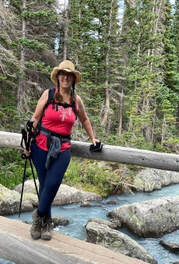 Barb Boyer Buck is the managing editor of HIKE ROCKY magazine. She is a professional journalist, photographer, editor and playwright. In 2014 and 2015, she wrote and directed two original plays about Estes Park and Rocky Mountain National Park, to honor the Park’s 100th anniversary. Barb lives in Estes Park with her cat, Percy. This piece of local and independent journalism was made possible by Backbone Adventures and Kirk's Mountain Adventures, both of Estes Park.
0 Comments
Leave a Reply. |
Categories
All
|
© Copyright 2025 Barefoot Publications, All Rights Reserved

